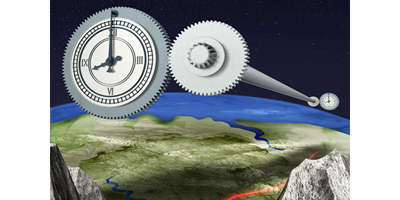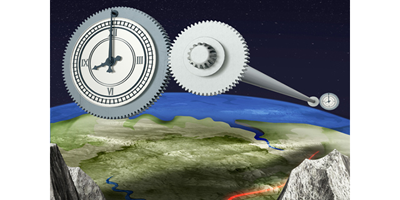Cross-Country Time Keeping
Next-generation atomic clocks are so precise they can’t be synchronized remotely with traditional communication pathways. Researchers are therefore investigating novel synchronization methods. A new milestone in this development is presented in Physical Review Letters, with the longest distance transmission of a highly stable optical frequency. The signal was sent back and forth across Germany on optical fibers, while keeping a fixed frequency to within a few parts in .
Several applications, such as navigation and fundamental physics, require the comparison of clocks at large physical separation. In geodesy, for example, the time difference between two distant clocks can provide relative elevation measurements with centimeter precision. Currently, clock signals are relayed by satellite communication, but the frequency of these radio signals drifts over time by as much as a few parts per . Higher stability is needed to compare recently developed optical atomic clocks that have precisions on the order of one part in .
Several past experiments have shown that optical fibers can faithfully transmit a clock-synchronizing frequency signal over hundreds of kilometers. Stefan Droste of Max Planck Institute of Quantum Optics, Germany, and his colleagues have now sent a highly stable terahertz ( nanometer) frequency over a distance of kilometers, doubling their previous record. The team achieved this result by equipping the dedicated optical fiber connecting two German research institutions with active stabilization to overcome frequency shifts from thermal noise and acoustic noise. The method might one day link together optical clocks around the world. – Michael Schirber





